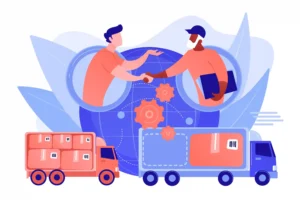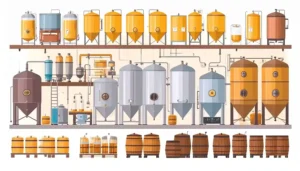5 Retail Strategies to Gratify Customers in 2022
After such a crazy year where new challenges sprung and never spared a single industry, we are finally on the verge of 2021. With a new year comes new challenges, and businesses need to adapt to stay prepared already. With a unified technology like LS Central Software Solution, retailers can get a smooth pass-through challenging time. In today’s scenarios where you can expect anything uncertain happening suddenly, retailers may bump into various Obstacles in 2022, such as: Keeping up with rising customers, where customers expect smoother and customized services. Difficulty in finding the right technology for your business. Losing loyal customers to the competition. Keeping up with labor shortage and optimizing existing staff’s efficiency. Difficult internal communication among different departments for e.g., difficulty in communicating the inventory requirement to the warehouse management. Poor decision-making due to lack of demand forecasting which later leads to overstocking and understocking. There is a motto in any business “Customer is the king” while keeping them on a pedestal. The customer must be satisfied with a service, or else they may jump to the other brand in a heartbeat. With customers being so moody and becoming high maintenance, retailers need similar technology to keep up with the same. Keep Customers Satisfied in 2022 The year 2022 brings new challenges as well as new opportunities: a fresh chance to satisfy customers. We have compiled five strategies to keep your customers intact with contentment. Contactless Payment Omnichannel experience Personalized promotions, deals, and offers. Self-Checkouts Staff Efficiency Optimization Allow Contactless Payments These days, hygiene has become an even bigger requirement. Contactless payment options not only deliver more convenience but also help comply with the social distancing norms. Contactless payment includes anything other than cash, be it debit, credit, UPI, etc. Allowing mobile payments and Wireless payment options adds to customer ease. Deliver an Omnichannel Experience Customers these days have become highly unpredictable and moody, demanding smoother ordering and payment options. They incline more towards the brands that can offer enough flexibility to place orders and make payments anytime, anywhere. Let the customer connect your business through various touchpoints like apps, websites, third-party applications, and so on. This way, you can reach more customers who have limited access to either of those platforms. Additionally, unifying all channels also cuts complexities and streamlines the entire journey for the retailer as well. Offer Personalized Promotions, Deals, and Offers Different customers feel differently about a product. You have to understand this algorithm and offer personalized promotions, deals, and offers. Seek a powerful AI-based technology for this i.e., a technology that keeps tabs on every customer transaction and understands their habits, spending patterns, likes, dislikes, and other relevant data to make customized deals and offers. Everyone loves surprises: you can also offer a surprise basket consisting of your new launches or a basket full of a combination of products at an attractive price. This strategy is helpful in reaching your customer’s heart since you make them feel special and belonged, they connect emotionally to your brand, and may even refer your store to others. Bust Long Queues and Allow Self-Checkouts With technology advancing rapidly, customers’ patience is dropping at a significant rate. Making them stand in long queues can be a risky affair. Thus, retailers have no choice but to deal with it smartly. Allowing self-check-out options ensures speedy transactions and free floor space. This feature is especially important during the festive season, where retailers are packed with a massive crowd. Some customers would rather drop everything as it is at the store, and leave as soon as their patience runs out. It is a risky situation where the only person benefiting is your competitor. Optimize your Staff Efficiency Reinforcing your staff with the efficiency of optimizing equipment like a Cloud POS solution can help provide greater customer satisfaction. If a customer has a tough time finding a product, one of your staff members can quickly locate it via his mobile device. With a POS, your staff can communicate with different departments more efficiently while cutting the computing time. Inventory can be stocked at the store already before running out. Moreover, maximizing your staff efficiency can bridge the gap between labor shortage and your business. A unified software solution like LS Retail Software Solutions can work like magic. Being backed with an AI-Based technology, you can track customer behavior, create personalized deals, and offers, forecast demand, and manage inventory better. A cloud-based POS enables a 360-degree inventory view. If you are looking for LS Retail implementation, contact Trident Information Systems, we are a LS Retail Gold Partner, backed up with more than 150 technical resources.
5 Retail Strategies to Gratify Customers in 2022 Read More »




